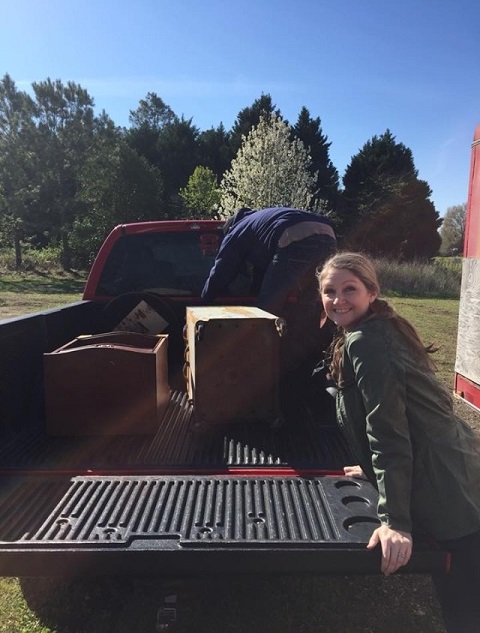Hiking the Georgia section of the Appalachian Trail as a section hiker
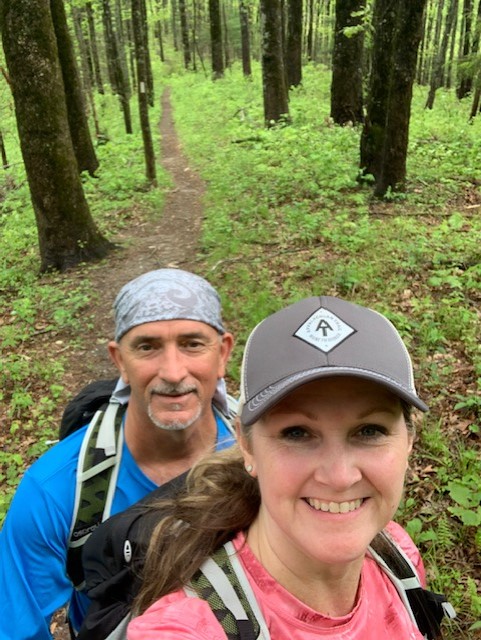
A few years ago, I shared that one of my bucket list items was to hike the entire Georgia section of the Appalachian Trail. You can read all about that post here and see how we got started on this goal.
But I never got around to sharing with you that we did actually achieve our goal! On May 23, 2020 we completed the last nine miles of the trail in Georgia and reached the GA/NC line on the trail.

So, it’s official! We’re what they refer to as “80 Milers” and have the badges to prove it.
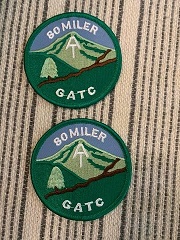
The last leg of the trip wasn’t without its issues. It rained off and on while we were camping in the area and we were concerned that the rain could keep us off the trail. To complicate matters, we needed to access the trail from a point that was not a normal starting/stopping point with shuttle access.

But after alot of research and looking at maps of the area, Mister found a way.
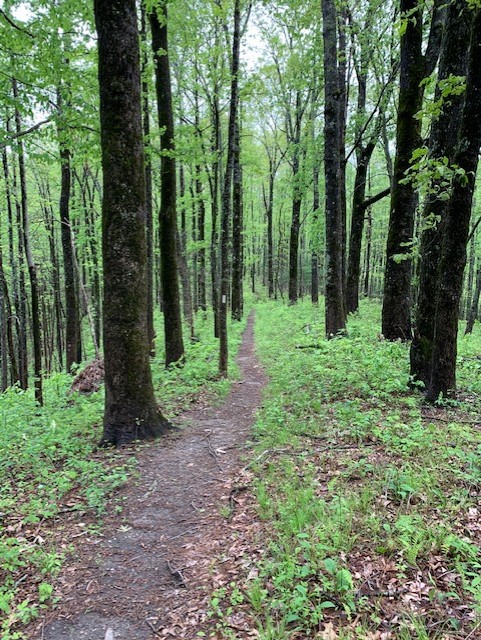
I have to mention that this section hike was only a couple of months after the pandemic had started. The shutdown was over in Georgia, but not all shuttles were operating and some access points to the trail were in question.
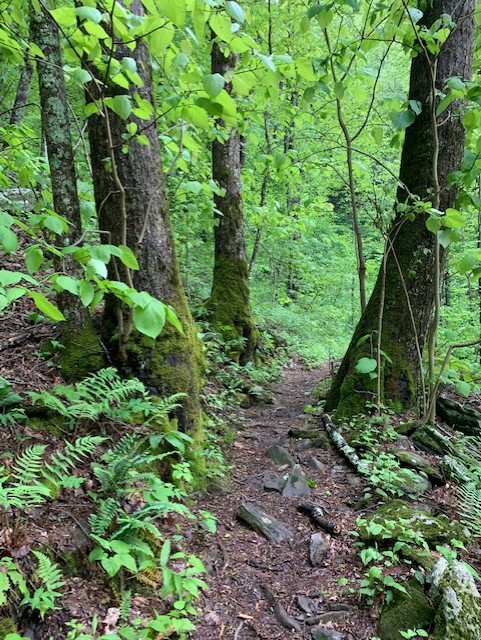
But we took our chances and headed up there anyway. We had already talked to our shuttle driver for updates about accessing the trail and felt confident we were going to be able to get it done.

I’m sure many of you have seen the beautiful north Georgia mountains, but if you have never actually taken a walk into the woods and experienced what the Appalachian Trail is all about, you don’t know what you are missing!
Depending on the time of year you go, you can see all types of wildflowers growing. I’ve seen ferns and trees that I have never even heard of. There’ also lots of wildlife to witness as well.
We’ve never actually seen a bear on the trail while hiking, but did see evidence of one while we hiked one time. We also saw a snake on one section hike. I usually let Mister lead the way on the trail. He’s good at setting our hiking pace, but he’s also much better than I am about looking ahead on the trail for any dangers.

The last little leg of this hike to Bly Gap was only 3.1 miles, an easy hike for us. Knowing this was the last few miles to the GA/NC state line, we were pretty excited!

This is the famous tree at the top of Bly Gap where hikers like to take their photos. It was pretty misty up on the mountain that day, so our photos didn’t turn out very well, but I was able to get a clear shot of the tree itself.


I will forever be grateful to that sweet husband of mine who always does his best to make me happy and help me achieve my goals and dreams. We’ve not actually done much hiking lately, but I’m so ready to plan another trip to get some more hiking done and see what the Appalachian Trail looks like further into NC.

Being in the mountains makes me feel closer to God, but being on the Appalachian Trail in the MIDDLE of those mountains is simply amazing!

Here are some facts about hiking the Appalachian Trail:
Hiking the Appalachian Trail is an incredible adventure that spans over 2,000 miles (3,218 kilometers) and covers 14 states along the eastern coast of the United States.
1. Length and Terrain: The Appalachian Trail (AT) stretches from Springer Mountain in Georgia to Mount Katahdin in Maine. It covers approximately 2,190 miles with a diverse range of terrains, including mountains, forests, meadows, and rivers.
2. Duration: Hiking the entire Appalachian Trail typically takes five to seven months for most thru-hikers (those who attempt to hike the entire trail in one continuous journey). However, the duration can vary depending on factors such as fitness level, pace, weather conditions, and rest days.
3. Thru-hiking vs. Section Hiking: Thru-hiking refers to completing the entire trail in one continuous journey, usually from south to north. Section hiking involves completing the trail in multiple trips or sections over a longer period of time.
4. Shelters and Campsites: Along the trail, there are numerous shelters and campsites specifically designated for hikers. These provide basic amenities such as sleeping platforms, privies, and water sources. However, during peak seasons, they can get crowded, and it’s advisable to carry a tent as a backup.
5. White Blazes: The Appalachian Trail is marked with white rectangular blazes painted on trees, rocks, or posts. These blazes guide hikers along the trail and help prevent getting lost.
6. Wildlife: The Appalachian Trail is home to a wide range of wildlife, including black bears, white-tailed deer, moose, snakes, and a variety of bird species. It’s important for hikers to practice responsible wildlife interactions and proper food storage to minimize conflicts.
7. Weather and Seasons: Hiking the Appalachian Trail exposes hikers to varying weather conditions. The trail is usually open from spring to fall, but weather can be unpredictable, ranging from extreme heat and humidity in the south to cold temperatures and snow in the north. Hikers must be prepared for changing weather and pack appropriate gear.
8. Trail Magic: Trail Magic refers to acts of kindness and generosity offered to hikers along the trail. It can include surprise food, drinks, rides, or other assistance from trail angels—people who support hikers by providing these unexpected treats.
9. Leave No Trace: The principles of Leave No Trace apply to hiking the Appalachian Trail. Hikers are encouraged to minimize their impact on the environment by properly disposing of waste, staying on designated trails, and respecting wildlife and other hikers.
Hiking the Appalachian Trail is a remarkable journey that requires careful planning, physical endurance, and mental resilience. It offers breathtaking scenery, personal growth, and the opportunity to connect with nature and fellow hikers.





